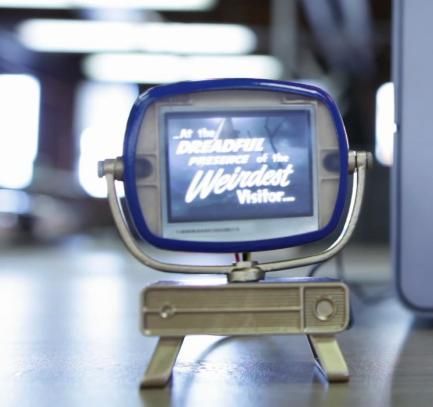Go back to the 1950s with this 3D printed replica of the iconic Predica TV set

While 3D printers are great for making replicas of old toys, games and other things from your childhood that have long since been thrown away. But 3D printing old technology? While that’s not something that many of us would consider (apart from the occasional GameBoy), that is exactly what Formlabs’ Michael Curry has done with the company’s signature Form 1+ SLA 3D printer. But instead of going back to the eighties or nineties, he has stepped in a time machine to go back to what could be called the dawn of consumer technology: the 1950s.
If you happen to be a historian of consumer technology, or even remotely interested in life in the 1950s (or in the Back to the Future franchise), there is one piece of equipment that should immediately spring to mind: the Philco Predicta television set. Though not the TV for the consumer market, its popularity and original design has made this machine an icon for 1950s America. So what would you 3D print as a replica to that decade?

As Curry explained, his design for the Tiny TV was completely inspired by that ‘iconic if flawed hallmark of the 1950s’ and by others who based themselves on that same tv set. However, instead of a desk-filling accessory based on the Predicta, the Tiny TV is actually works and is built around the 2 inch LCD display with a body of Formlabs’s signature clear resin. ‘The front lens was polished clear, and the body was sanded and painted. It works best when paired with hottest coming attractions of the 1950’s.’

Now if you’d like to host a horror night in style with a viewing of The Creature of the Black Lagoon (1954), than this is a must-do project for you. Fortunately, Curry has shared all of necessary files (in .form format) for free, which can be found here. The TV screen itself can be ordered from Adafruit here. The building project itself is fairly straightforward. 3D print the parts on your Formlabs 3D printer and take them through the usual steps for post-printing processing, such as rinsing, drying, and snapping off the support structures.
Michael subsequently spray painted his parts for extra effect, though this step can be filled in in whichever way you’d like. Finally, it's a simple matter of putting in the 2 inch NTSC/PAL display and you’re ready to go! To actually watch TV on this 3D printed mini television, your best best would be a Raspberry Pi filled with movies, though the screen can be connected to any analog composite-video output, such as YBox or Propeller. Just a HDMI signal, for instance, won’t work so follow Adafruit’s instructions if you want a digital signal to broadcast. Aside from that final step of getting it to actually function as a TV, this is an awesome little project to work on and a perfect tribute to a simpler time in technology history.







